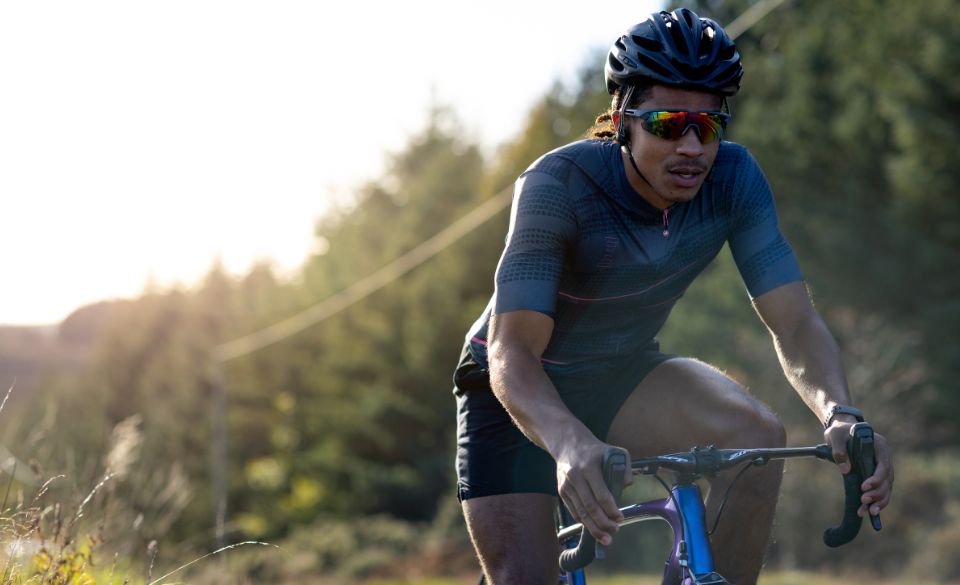
Cycling: How To Become a Better Hill Climber
Page Contents
Ah, the thrill of conquering those challenging hills on your bike! Hill climbing can be both a daunting and exhilarating part of cycling. Whether you’re a seasoned rider looking to up your hill-climbing game or a beginner eager to tackle your first incline, this guide will help you become a better hill climber.
1. Master Your Gears: The Key to Efficient Climbing
Understanding your bike’s gears is fundamental to becoming a proficient hill climber. Gears allow you to adjust the resistance, making it easier to pedal uphill. A study in the “Journal of Sports Sciences” found that proper gear selection can significantly impact your climbing performance.
When you approach a hill, shift to a lower gear (larger rear cog or smaller front chainring) to reduce the effort required to turn the pedals. As the slope gets steeper, keep shifting to maintain a comfortable cadence, typically around 70-90 revolutions per minute (RPM). By finding the right gear and cadence combination, you’ll not only conserve energy but also climb with greater ease and speed.
2. Climbing Technique: Sit or Stand?
The choice between sitting or standing while climbing hills depends on the terrain and your personal preference. Both approaches have their advantages. A study in the “Journal of Applied Physiology” suggests that standing on steep gradients can recruit more muscle fibers, allowing you to generate more power. However, it also consumes more energy.
In general, when tackling long, gradual inclines, it’s more efficient to stay seated. Keep a steady cadence and focus on spinning smoothly. Save standing for shorter, steeper sections where you need that extra burst of power. Experiment with different techniques to find what works best for you and your specific riding style.
3. Pacing Yourself: Maintain a Steady Effort
One common mistake when hill climbing is starting too aggressively and burning out prematurely. A study in the “European Journal of Applied Physiology” emphasizes the importance of pacing yourself during climbs. Begin at a sustainable effort level, knowing that you’ll be tackling the hill for an extended period.
Maintaining a steady effort doesn’t mean you have to go slow; it means finding a rhythm that allows you to sustain your energy throughout the ascent. Listen to your body, breathe deeply, and avoid going into the red zone too early. Remember, hill climbing is as much about mental endurance as it is about physical strength.
4. Train for Hills: The Best Way to Improve
The old adage “practice makes perfect” holds true for hill climbing. Incorporating hill-specific training into your cycling routine can make a significant difference in your climbing abilities. A study in the “Journal of Strength and Conditioning Research” showed that targeted hill training can enhance both power output and endurance.
To train effectively, seek out hilly routes or dedicate specific rides to hill repeats. Gradually increase the intensity and duration of your climbs, challenging yourself to improve over time. Hill training not only builds physical strength but also boosts your mental fortitude, helping you tackle climbs with confidence.
Best Workouts to Improve Cycling Uphill
Cycling uphill is a challenging but rewarding aspect of cycling that can significantly improve your overall strength, endurance, and climbing skills. Whether you’re preparing for a mountainous race or simply want to conquer hills more effortlessly, these workouts will help you become a stronger and more efficient hill climber.
1. Hill Repeats: Building Strength and Endurance
Hill repeats are a classic and highly effective workout for improving your climbing abilities. Find a moderately steep hill with a length of 1-2 minutes (or longer, depending on your fitness level). Here’s how to do hill repeats:
– Warm-up: Start with a 10-15 minute warm-up ride on flat terrain to prepare your muscles and joints.
– Climb: Ride up the hill at a hard effort level, aiming to maintain a consistent pace. Focus on smooth pedal strokes and controlled breathing.
– Descend: Once you reach the top, descend the hill and recover for a few minutes on flat terrain.
– Repeat: Perform multiple repeats of the hill climb, gradually increasing the number as your fitness improves.
– This workout builds both strength and endurance, helping you tackle longer and steeper climbs with ease.
2. Tempo Climbing: Improving Sustainable Effort
Tempo climbing is all about maintaining a steady, sustainable effort level while climbing. This workout is ideal for improving your ability to tackle long, gradual climbs without burning out.
– Find a Moderate Climb: Look for a hill with a moderate gradient (5-7%) that will challenge you but still allow you to maintain a controlled pace.
– Set a Tempo Pace: Ride up the hill at a tempo pace, which should feel challenging but sustainable. You should be able to hold a conversation, but it should require effort.
– Focus on Cadence: Maintain a consistent cadence (pedal revolutions per minute) throughout the climb. Aim for 70-90 RPM, adjusting your gears as needed.
– Repeat and Extend: Start with a few intervals and gradually extend the duration of your tempo climbs as your fitness improves.
3. Strength and Power Intervals: Building Explosive Strength
Building explosive strength is crucial for conquering short, steep climbs or accelerating up hills. Incorporate strength and power intervals into your training regimen:
– Warm-up: Begin with a warm-up ride of 10-15 minutes on flat terrain.
– Sprint Intervals: Find a short, steep hill or a section of a hill (15-30 seconds) and sprint up it at maximum effort. Focus on generating power from both your legs and upper body.
– Recovery: Descend the hill and recover for 2-3 minutes at an easy pace on flat terrain.
– Repeat: Perform multiple sprint intervals, gradually increasing the number as you progress.
– This workout enhances your ability to accelerate and tackle steep sections with vigor.
4. Long Endurance Rides: Building Stamina
Long endurance rides are essential for building the stamina required to tackle sustained climbs. These rides should be done on routes that include extended climbs, simulating the demands of a hilly event or race.
– Plan a Long Route: Choose a route that includes several extended climbs or rolling hills.
– Steady Pace: Maintain a steady, endurance-oriented pace throughout the ride, aiming to stay within your aerobic zone.
– Nutrition and Hydration: Pay attention to your nutrition and hydration during these rides to ensure you have the energy and electrolytes needed for sustained effort.
– Progressive Challenges: Gradually increase the duration and intensity of your long endurance rides over time.
5. Cadence Drills: Enhancing Pedal Efficiency
Efficient pedal technique can make a significant difference when climbing. Cadence drills focus on improving your pedal efficiency, allowing you to maintain power while reducing fatigue.
– Select a Hill: Choose a moderate hill with a consistent gradient where you can practice different cadences.
– Variety of Cadences: During your ride, experiment with various cadences. Start with a higher cadence (90-100 RPM) and then switch to a lower cadence (60-70 RPM) while maintaining the same effort level.
– Evaluate and Adjust: Pay attention to how each cadence feels and how it affects your climbing. Adjust your gear and cadence accordingly to find the most efficient combination for different hill types.
– By practicing various cadences, you’ll become more adaptable when tackling diverse climbs, optimizing your efficiency on the road.
6. Incline Simulation on Indoor Trainer: Controlled Climbing
When you can’t access hills outdoors, an indoor trainer can simulate climbing conditions effectively. You can adjust resistance and replicate hill climbs in a controlled environment.
– Set Up Your Trainer: Secure your bike on an indoor trainer and set it to an appropriate resistance level.
– Structured Workouts: Follow structured workouts designed for hill climbing simulation. These workouts often include intervals of increasing resistance to mimic climbing.
– Progressive Training: Start with shorter sessions and gradually increase the duration and intensity as you become more accustomed to the training.
– Indoor training provides a controlled environment for focused hill climbing practice, helping you build strength and endurance when outdoor hill climbs aren’t an option.
7. Recovery Rides: Promoting Restoration
While challenging workouts are essential for improvement, recovery is equally important. Recovery rides should be part of your training plan to allow your muscles and joints to recuperate.
– Low Intensity: Keep these rides at a very low intensity, focusing on spinning at a comfortable pace.
– Flat Terrain: Choose a flat route or terrain with minimal elevation change to reduce stress on your muscles.
– Active Recovery: Use recovery rides to actively recover and flush out metabolic waste products from more intense workouts.
Regular recovery rides prevent overtraining, reduce the risk of injury, and ensure that you’re consistently ready to tackle hill climbs at your best.
Remember, consistency is key in any training regimen. Combine these workouts, gradually progress in intensity and duration, and complement them with a balanced diet and proper hydration. With dedication and perseverance, you’ll become a stronger and more confident hill climber, ready to conquer even the most challenging ascents on your cycling journeys.
Final Words – How To Become a Better Hill Climber
In the world of cycling, conquering hills is a significant milestone that demands a combination of strength, endurance, technique, and mental resilience. Through a carefully crafted training regimen, you can enhance your climbing prowess and tackle hills with confidence and finesse.
Our exploration of the best workouts to improve cycling uphill has provided you with a toolbox of training strategies. Whether you’re aiming to build strength and power, refine your technique, or develop endurance, these workouts offer a comprehensive approach to climbing success.
Consistency and patience are your allies on this journey. Over time, as you incorporate these workouts into your training routine, you’ll notice significant improvements in your hill-climbing abilities. The satisfaction of reaching those summits and the breathtaking views that accompany them will be well worth the effort.
So, gear up, head for the hills, and embrace the challenge of becoming a stronger and more skilled hill climber. With each pedal stroke, you’ll not only ascend those peaks but also elevate your cycling adventures to new heights.



